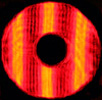April 1,
2011: Unfortunately
NOT an April Fool's Joke
The old adage goes - "You get what you pay for." In this
case, the client found it out the hard way.
He
bought a piece of "quartz" from a Chinese glass company. Keep
in
mind that at this point, Chinese glass is not exactly the greatest in
quality. The blank didn't look too bad after we generated it,
so
I agreed to proceed and see how it ground and polished.
Immediately
into grind I noticed parts of the glass contained signifant impurities
and bubbles. Clearly, it was not going to be up to the
client's
standards when polished, and I let him know. I also said I
would
continue and polish it out, to see how the surface looked.
Then,
hopefully it would be useful for an application where lots of bubbles
didn't really matter, such as LIDAR, etc.
Here's what it looked
like as it was being polished. At this point all of the
"stuff"
in the glass could be seen, and where they met the surface some marks
could be seen. Still, I felt it might be optically useful,
and I
kept the polishing machine spinning.
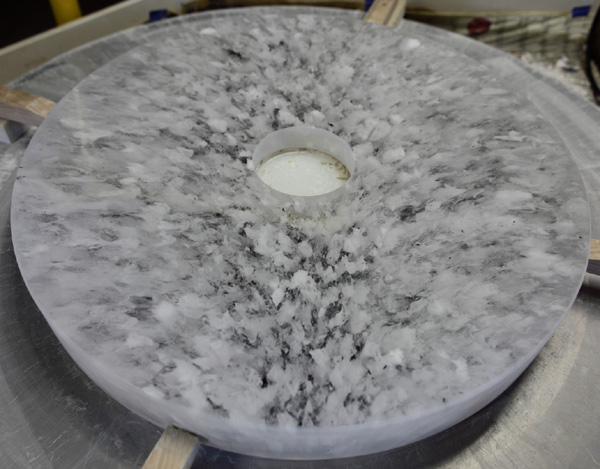
After
putting a good polish on it, it was time to put another mirror on that
machine, and I decided to give the mirror a quick Foucault test.
Here
are photos of the test - the first photo is at 0.000", the
second
photo is 0.025" farther away, and the third photo is 0.025" farther
away.
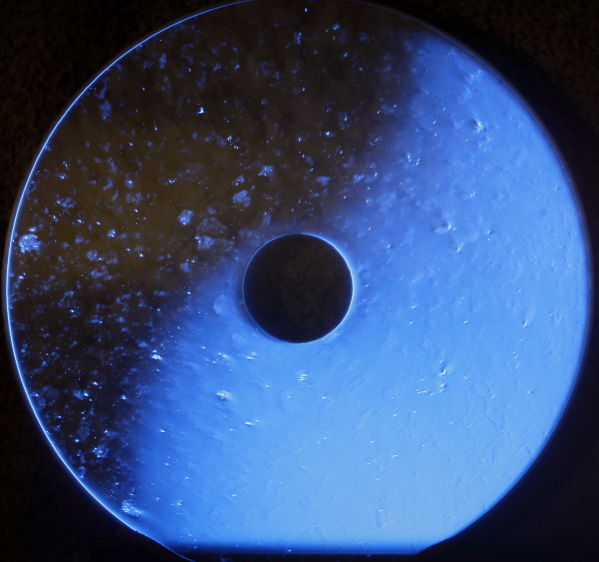
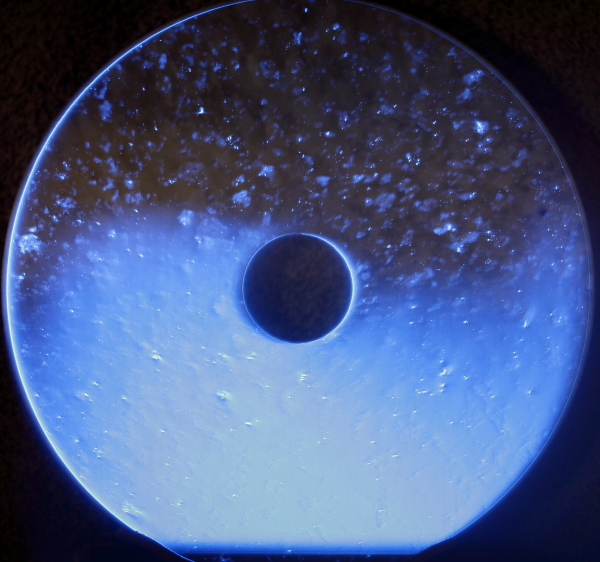
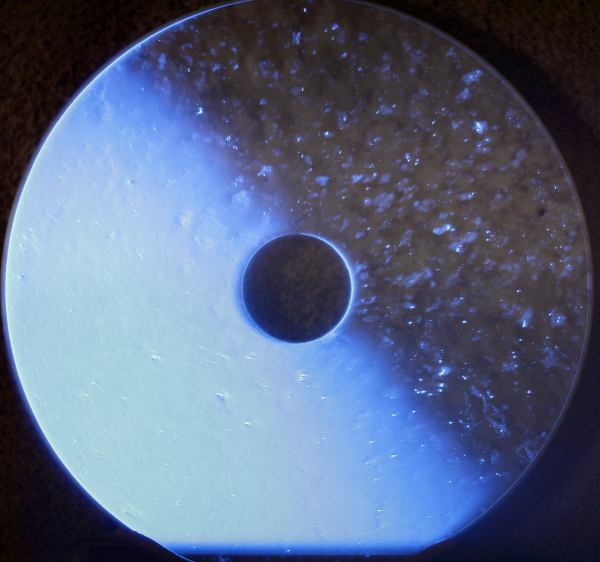
The
rotation of the knife edge shadow is clear and dramatic, an indicator
of severe figure of revolution problems. In fact, I have not
seen
a figure this asymmetric since I tested Bob Holmes' 32" mirror after it
was returned from an incompetent optician. (See these images of 32" mirror before
I reworked it, and note the asymmetry of the shadows.)
Also
note the "fingerprints" of the "features" in the glass where they
intersect with the surface. These form dark and light areas
across the surface.
In this case, the substrate is at fault.
No material should polish out with this much astigmatism.
It's simply BAD GLASS.
To add a quantitative aspect to the measurement, I set up my
interferometer and snapped a photo of the image on the monitor.
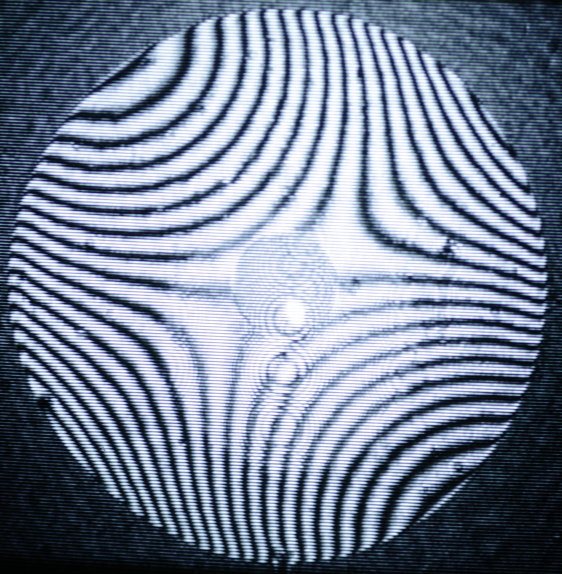
The
fringes clearly show a "saddle" shape, where two quadrants on one axis
are higher than two quadrants that lie on an axis perpendicular to the
first. In other words, using a clock face as a reference, the
mirror at 10:30 and 4:30 is either higher or lower than the mirror at
1:30 and 7:30.
To quantify the error, simply count the fringes
between neighboring quadrants. My count gives 15 - 16
fringes, or
7.5 - 8 waves on the glass.
So,
this piece of glass is not very useful. Not sure what we'll
do
with it. Maybe it would make a good bird bath, or possibly a
table top.
So what is the moral of the story? Certain
sources of glass are not to be trusted, and you should trust your
optician to select a good supplier to provide the substrate for your
next telescope project. Life is short, but you can be stuck
with
a bad mirror for a long time if your money is not spent wisely.
My
sources for glass have a track record of good annealing, good
machining, and timely delivery. That's why I have chosen them.
Please check back for future installements of "In
the Shop".
Mike
Lockwood
Lockwood Custom Optics


